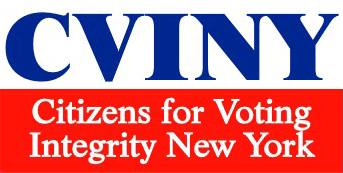“I am appalled by this violation of my privacy,” said Dante de Blasio, a registered Democrat, via a spokesman for his father, the mayor. “My main concern is not that people will know who I voted for, but rather that the B.O.E. has repeatedly shown complete incompetence and still hasn’t been reformed by the state. Hundreds of my fellow voters have had their right to a private ballot violated by the B.O.E.’s blatant carelessness. Enough is enough."
……………………………………………..
https://www.nytimes.com/2021/09/20/nyregion/voters-dante-deblasio.html
Glitch Reveals Ballot Choices of N.Y.C. Voters, Including Mayor’s Son
The Board of Elections inadvertently allowed the mayoral primary votes of 378 New Yorkers, including Dante de Blasio, to become public, a report found.
By Dana Rubinstein
Sept. 20, 2021
When a well-known 20-something New Yorker cast his Democratic primary ballot in June, he had every reason to assume that no one would know his choice for mayor — a point of interest for many, since his father was the current mayor.
As it turns out, Dante de Blasio, the son of Mayor Bill de Blasio, was not afforded that privacy.
In a report released Monday by the Stevens Institute of Technology and Princeton University’s Electoral Innovation Lab, researchers said that missteps by the New York City Board of Elections had inadvertently allowed the lab to determine the votes of 378 New Yorkers in the mayoral primary. Those voters include the mayor’s son and a former New York City deputy mayor, Robert K. Steel.
Because that information is supposed to be secret, in accordance with state law, the report’s findings suggest a breach of one of America’s most prized guarantees, the secret ballot, and represent another blemish for the city Board of Elections.
“I am appalled by this violation of my privacy,” said Dante de Blasio, a registered Democrat, via a spokesman for his father, the mayor. “My main concern is not that people will know who I voted for, but rather that the B.O.E. has repeatedly shown complete incompetence and still hasn’t been reformed by the state. Hundreds of my fellow voters have had their right to a private ballot violated by the B.O.E.’s blatant carelessness. Enough is enough.
The researchers were able to identify the voting records of the individual New York City voters by cross-referencing the New York State voter file — a list of every registered voter, whether they voted and their address — with the board’s cast-vote records, which contained hundreds of voting precincts where just one ballot was cast.
Those precincts included that of Mr. de Blasio, who is registered at Gracie Mansion, and that of Mr. Steel, a registered Republican who lives in NoHo, a heavily Democratic part of Manhattan.
Dante de Blasio ranked Maya Wiley as his first choice for mayor in the June Democratic primary, followed by Eric Adams, Kathryn Garcia, Raymond McGuire and Shaun Donovan, according to the researchers.
Mr. Steel, when reached by phone, described himself as alarmed and disappointed by his inclusion in the list of identifiable voters, but declined to comment further.
It was easier for researchers to identify Republican voting records, like Mr. Steel’s, than Democratic voting records, because there are fewer Republicans in New York City. Democratic registration here outstrips Republican registration by nearly seven to one. In Mr. Steel’s voting precinct, there were only 19 registered Republicans, as of August.
The problem of eliminating the anonymity of data by cross-referencing data sets is fairly common, and there’s a whole area of math dedicated to finding ways to share data while protecting privacy.
The New York City Board of Elections is not considered among the most sophisticated managers of data. In June, the board accidentally released an incorrect vote tally for the most important mayoral primary in a generation, and then had to retract that tally and tabulate the vote all over again.
This was the first mayoral primary in city history to use ranked-choice voting, in which city voters were able to rank up to five choices for mayor in order of preference. Under the system, if no candidate won a majority, the last-place winner was eliminated. The second-choice votes of those who had favored the last-place candidate were counted instead. The process continued until there was a winner.
The winner was Mr. Adams, who will face Curtis Sliwa, the Republican candidate, in the November general election.
The new voting system proved to be a challenge for the board, which repeatedly declined technical assistance from the supplier of the software that it used to tabulate the ranked-choice votes.
On Sept. 13, board officials discussed the report’s findings with Lindsey Cormack, an assistant professor of political science at the Stevens Institute of Technology, who wrote the report with Professor Sam Wang, who directs the Electoral Innovation Lab, and Jesse T. Clark, a Princeton postdoctoral researcher.
In that conversation, board officials said that they believe their legal reporting requirements compelled them to release the voting records in a particular format.
“The manner in which election results are reported is legally mandated,” a board spokeswoman, Valerie Vazquez-Diaz, said via email.
The researchers recommended the board group single-voter precincts with neighboring, larger precincts to avoid such ready identification, a practice the board contends would require a change to the City Charter.
The researchers say that whatever the legal solution, the board should pursue it.
“We go into the ballot box thinking that our votes are private, that our choices are private,” Professor Cormack said.
Good government groups took comfort in the limited nature of the problem.
Roughly one million New York City residents voted in the June primary, and only 378 votes were revealed.
“This is a minimal problem,” said Susan Lerner, executive director of Common Cause/New York. “This is a very very small fraction of the total number of voters. And they’re absolutely right, it’s easy to solve this problem.
